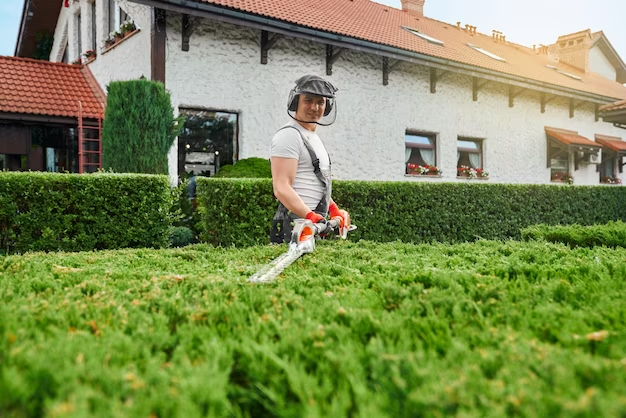When it comes to maintaining a beautiful lawn and landscape design, few things compare to the vibrant and lush appearance of a well-maintained grass lawn. With the right techniques and strategies, it’s possible to achieve a greener grass landscaping that thrives through all seasons, adding beauty and value to your home. Whether you’re aiming for a vibrant, healthy lawn or an eco-friendly approach to landscaping, understanding key landscaping principles will help you get there.
The Importance of Greener Grass Landscaping
A greener grass lawn isn’t just about aesthetics—it’s about cultivating a healthy, resilient environment that benefits both your home and the planet. Here’s why greener grass landscaping is essential:
- Curb Appeal: A lush lawn increases your home’s visual appeal, attracting attention from neighbors and visitors alike.
- Environmental Benefits: Healthy grass helps reduce carbon footprints by absorbing carbon dioxide from the air and producing oxygen.
- Water Management: Well-established grass lawns can absorb rainfall effectively, preventing soil erosion and flooding.
When you focus on achieving a greener landscape, you are not only enhancing your property but also contributing to a healthier environment for the long term.
Best Grass Types for a Greener Landscape
Choosing the right type of grass is one of the first steps toward a vibrant lawn. The type of grass you select will influence the color, growth rate, and maintenance requirements of your lawn. Here are some of the most popular types of grass for a greener lawn:
1. Kentucky Bluegrass
Kentucky bluegrass is a popular cool-season grass that grows well in cooler climates. Its fine texture and rich, deep green color make it an attractive choice for homeowners. This grass type thrives in well-drained soils and is known for its ability to establish a dense, thick lawn that resists weeds.
2. Bermuda Grass
Bermuda grass is a warm-season grass that flourishes in areas with high temperatures and full sunlight. It is a low-maintenance option that is drought-resistant and tolerates a variety of soil conditions. Bermuda grass can handle heavy foot traffic, making it a great option for families with active children or pets.
3. Zoysia Grass
Zoysia grass is known for its ability to tolerate both heat and shade, making it a versatile choice for various environments. It has a dense growth pattern that helps prevent weed growth, making it easier to maintain. Zoysia grass is slow-growing, so once established, it requires less frequent mowing.
4. Fescue Grass
Fescue grass is another cool-season grass that works well in shaded areas. It has a fine, soft texture and remains green even in low-light conditions. Fescue is a drought-tolerant grass, making it an excellent choice for homeowners looking to conserve water while maintaining a beautiful lawn.
Soil Health: The Foundation for Greener Grass
A healthy lawn starts with healthy soil. The quality of your soil determines how well your grass will grow and thrive. Here are essential steps for improving soil health:
1. Soil Testing
Before planting grass or fertilizing, it’s important to perform a soil test to determine its pH level and nutrient content. This test will help you understand if your soil needs any specific amendments, such as lime to raise pH or sulfur to lower pH.
2. Aeration
Soil compaction can prevent grass roots from growing deep and strong. Aeration involves creating small holes in the soil to allow water, nutrients, and air to penetrate deeper into the ground. Aerating your lawn regularly improves root health and promotes a greener, more resilient lawn.
3. Adding Organic Matter
Incorporating organic matter such as compost into your soil improves its structure, encourages microbial activity, and enhances nutrient retention. This results in a greener lawn that is less prone to disease and pests.
Lawn Care Tips for a Greener Lawn
Achieving a lush, green lawn requires ongoing maintenance. Here are some tips to keep your grass looking its best throughout the year:
1. Proper Watering Techniques
Proper watering is essential for maintaining a greener lawn. Over-watering or under-watering can lead to root damage or weed growth. To ensure healthy grass, follow these watering guidelines:
- Water deeply and infrequently, aiming for about 1 to 1.5 inches of water per week.
- Water early in the morning to reduce evaporation and prevent fungal diseases.
- Use a soaker hose or drip irrigation system to minimize water loss and ensure even distribution.
2. Mowing for Health
Regular mowing is necessary to keep your lawn looking pristine. However, cutting the grass too short can stress it and leave it vulnerable to disease. Follow these mowing tips:
- Keep grass at a height of about 2.5 to 3 inches to encourage deeper root growth.
- Never remove more than one-third of the grass height at a time.
- Keep your mower blades sharp to ensure clean cuts and prevent injury to the grass.


